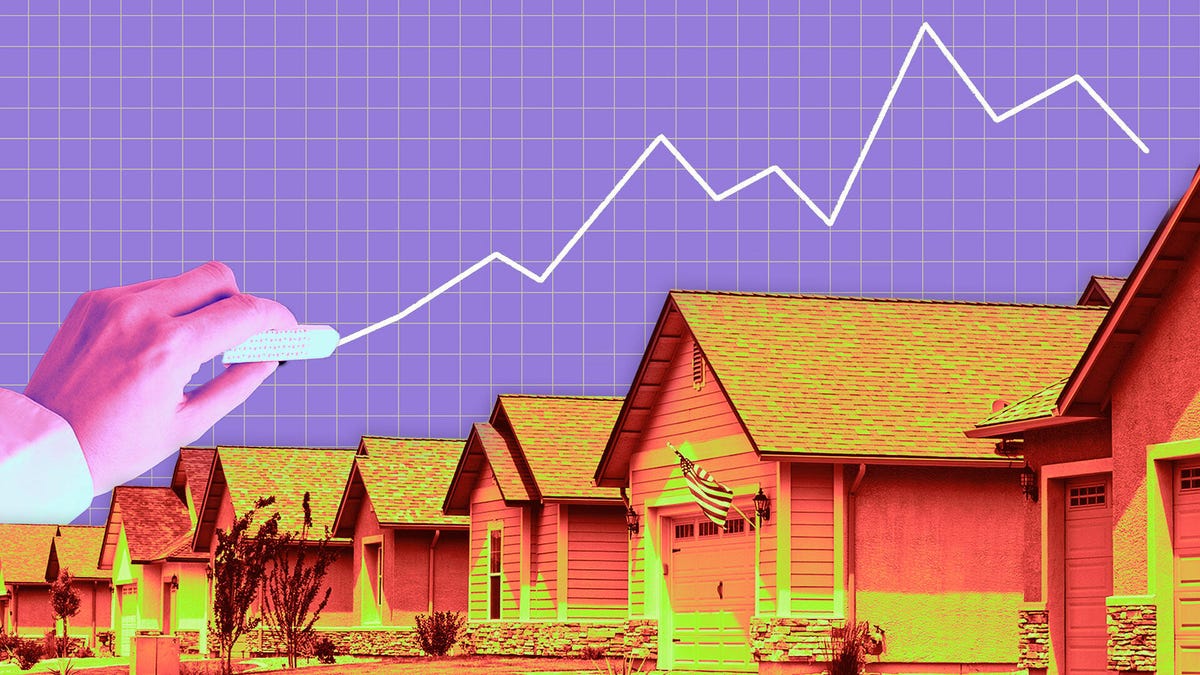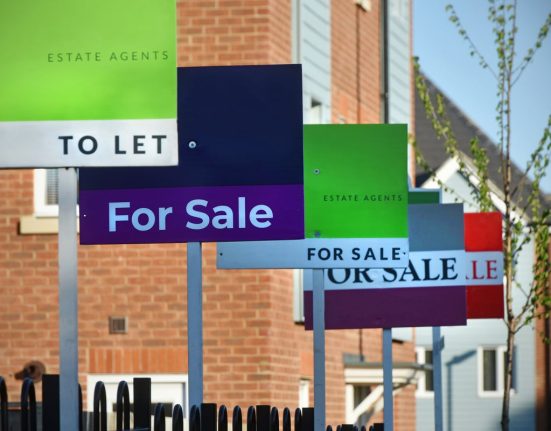
Buyers should keep an eye on the possibility of rate cuts in the next few months.
For the past several months, the average 30-year fixed mortgage rate has sat between 6.5% and 7%. Prospective homebuyers shouldn’t hold their breath for that to change anytime soon.
On July 30, the Federal Reserve is expected to keep borrowing rates the same at its fifth monetary policy meeting this year. Although the central bank doesn’t directly dictate mortgage rates, its policy decisions indirectly influence consumer borrowing costs, including for mortgages, over the long term.
Mortgage rates, which are primarily tied to 10-year Treasury yields in the bond market, are also sensitive to other factors, including investor outlook for future Fed moves. Economists will be closely listening to Fed Chair Jerome Powell’s post-meeting remarks for any hints about rate cuts later this year.
“While the Fed isn’t expected to cut rates, Powell’s language will be crucial,” said Logan Mohtashami, lead analyst at HousingWire.
Markets currently expect a Fed cut in September. If Powell indicates slow progress on inflation and ongoing economic uncertainty, that may keep the Fed in monitor mode this fall, and bond yields and mortgage rates could increase.
Ultimately, it’s unlikely that mortgage rates will fall significantly outside the current range unless the economy slows significantly or unemployment increases sharply.
Affordability challenges and elevated mortgage rates have kept the housing market frozen for several years. Even as the long-standing housing shortage eases in several local markets and gives those buyers improved negotiating power, the rest remain locked out by steep home prices.
Why is the Fed holding off on interest rate cuts?
After inflation showed ongoing signs of slowing in late 2024, the Fed lowered rates three times, yet the picture is more complex this year.
The Fed is tasked with maintaining maximum employment and containing inflation. A sluggish economy typically warrants interest rate cuts to stimulate growth, but lowering rates too quickly could fuel price growth when inflation is still sticky.
Though President Trump has pushed for the Fed to cut rates immediately, reducing rates prematurely, especially in response to political pressure, could exacerbate the problem. “Markets might interpret such a move as a signal of diminished inflation discipline, pushing bond yields higher due to inflation concerns,” said Kara Ng, senior economist at Zillow. “Ironically, this could cause mortgage rates to rise, not fall, counteracting the intended stimulus.”
Tariffs are also a wild card for the mortgage market and the broader economy. While assumed to be inflationary, they could be transitory and translate into a one-time price increase for goods and services.
“There is a widely held consensus among economists that the potential impact of the administration’s tariff policies and economic growth are still unclear and more time is needed to see the full effect,” said Selma Hepp, chief economist at Cotality. “As a result, the Fed is adopting a ‘wait-and-see’ approach.”
Most analysts expect two Fed rate cuts this year, but with trade negotiations ongoing, it’s still a toss-up, said Mohtashami.
Following signs of slowing inflation in late 2024, the Fed implemented three interest rate cuts but has since adopted a more cautious wait-and-see approach this year. Policymakers have held interest rates steady amid market fluctuations, a stance it’s expected to uphold at its Federal Open Market Committee meeting next week
Today’s complex economic picture presents a challenge for the Fed, which is tasked with maintaining maximum employment and containing inflation. The president has claimed that prices are low and the Fed should cut rates immediately. But tariffs, which are taxes on imported goods, are widely expected to drive up prices.
We’re already starting to see the effects: In June, inflation ticked up to 2.7%. While lower than markets expected, price growth is still well above the Fed’s annual target rate of 2%.
As a result, experts say the central bank has good reason to keep rate cuts on pause.
“Increased uncertainty about the inflation picture lessens the chances of a cut in rates by the Fed,” said Keith Gumbinger, vice president at HSH.com. “Greater inflation would argue against cutting rates, absent any significant deterioration in labor conditions.”
Fewer interest rate cuts combined with the recently passed budget bill, which is expected to significantly boost government debt deficits, are likely to keep upward pressure on longer-term bond yields and mortgage rates. But Kushi notes that “any changes, delays or confirmations around tariffs could swing investor sentiment and move yields.”
When will mortgage rates fall to 6%?
Earlier mortgage projections had rates dropping to around 6% by the end of 2025. Now, mortgage rates are expected to dip only slightly. Fannie Mae’s June Housing Forecast says the average rate for a 30-year fixed mortgage will reach 6.5% by year’s end. The Mortgage Bankers Association expects rates to stay mostly flat around 6.7% this year.
Generally, housing market experts don’t see home loan rates falling below 6% until late 2026 at the earliest. However, rising unemployment or negative growth could prompt a series of Fed cuts and lead to lower bond yields and mortgage rates.
At the same time, if cheaper mortgages result from an economic downturn, with households facing job losses, tighter budgets and financial instability, potential buyers could remain locked out. A recession isn’t a foregone conclusion, but the risk of a slowdown remains, with joblessness on the rise.
Can you get a lower mortgage rate?
Prospective buyers waiting for mortgage rates to drop may soon have to adjust to the “higher for longer” rate environment. Yet while market forces are out of your control, there are ways to make buying a home slightly more affordable. Last year, nearly half of all homebuyers secured a mortgage rate below 5%, according to Zillow.
Here are some proven strategies that can help you save up to 1.5% on your mortgage rate.
💰 Build your credit score. Your credit score will help determine whether you qualify for a mortgage and at what interest rate. A credit score of 740 or higher will help you qualify for a lower rate.
💰 Save for a bigger down payment. A larger down payment allows you to take out a smaller mortgage and get a lower interest rate from your lender. If you can afford it, a down payment of at least 20% will also eliminate private mortgage insurance.
💰 Shop for mortgage lenders. Comparing loan offers from multiple mortgage lenders can help you negotiate a better rate. Experts recommend getting at least two to three loan estimates from different lenders.
💰 Consider mortgage points. You can get a lower mortgage rate by buying mortgage points, with each point costing 1% of the total loan amount. One mortgage point equals a 0.25% decrease in your mortgage rate.
Watch this: 6 Ways to Reduce Your Mortgage Interest Rate by 1% or More






